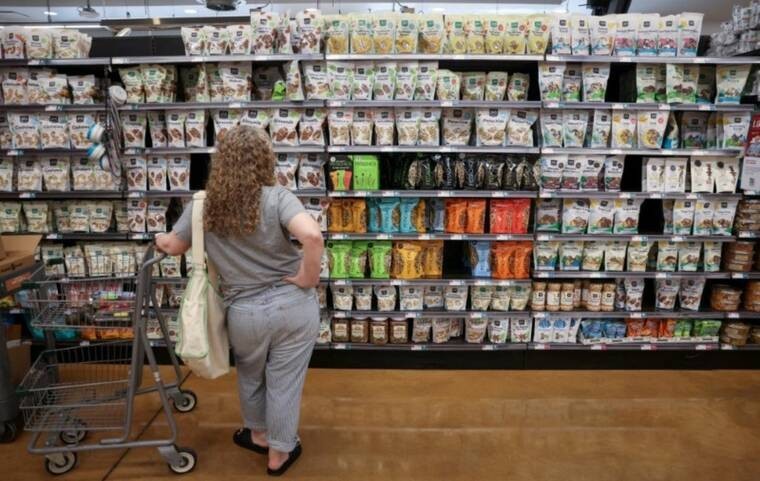12
views
views
Explore why U.S. consumer sentiment has dropped to historic lows in 2025, fueling recession fears. Learn about the impact of tariffs, inflation expectations, and economic uncertainty, and what it means for the future.

In April 2025, U.S. consumer sentiment took a nosedive, hitting a preliminary reading of 50.8, the second-lowest level since records began in 1952, according to the University of Michigan’s Consumer Sentiment Index. This sharp 11% drop from March, and a staggering 30% decline since December 2024, has economists and consumers alike sounding alarm bells about a potential recession. But what’s driving this pervasive pessimism, and what does it mean for the U.S. economy? Let’s dive into the key factors, their impacts, and what might lie ahead.
The Perfect Storm: Tariffs, Inflation, and Uncertainty
The primary culprit behind the plummeting consumer sentiment is President Donald Trump’s aggressive tariff policies, which have sparked fears of a trade war. These tariffs, including a 145% levy on Chinese goods and 10% duties on other trading partners, have created a volatile economic environment.
While a 90-day tariff pause was announced on April 9, 2025, the damage to consumer confidence was already done. According to Joanne Hsu, director of the University of Michigan’s Surveys of Consumers, the decline in sentiment is “pervasive and unanimous across age, income, education, geographic region, and political affiliation” due to “frequent gyrations in economic policies” that make planning difficult.
Rising Inflation Expectations: Consumers now expect inflation to hit 6.7% in the next year, the highest since 1981, and long-term inflation expectations have climbed to 4.4%. This surge, reported across all political affiliations, reflects fears that tariffs will drive up prices for everyday goods. As tariffs act as taxes on imports, businesses often pass these costs to consumers, fueling concerns about affordability.
Economic Uncertainty: The erratic nature of Trump’s trade policies—imposing, pausing, and reimposing tariffs—has rattled financial markets and consumer confidence. Posts on X highlight the sentiment, with users noting a 32% drop in consumer sentiment since January 2025 and an estimated $1,300 increase in household costs due to tariffs. This uncertainty, coupled with a reactive stock market, has led to comparisons with the 2008 financial crisis by industry leaders like BlackRock’s Larry Fink.
Warning Signs: Unemployment Fears and Stagflation Risks
The University of Michigan survey revealed multiple red flags pointing to a potential recession:
-
Unemployment Expectations: The share of consumers expecting unemployment to rise has more than doubled since November 2024, reaching its highest level since 2009, during the Great Recession. This fear contrasts with the robust labor market of recent years, which had supported consumer spending.
-
Stagflation Concerns: Economists warn of “stagflation,” a toxic mix of high inflation and weak economic growth last seen in the 1970s. With inflation expectations at a 40-year high and consumer confidence at historic lows, the U.S. economy risks entering this dangerous territory.
Despite these “soft data” warnings, “hard data” like hiring rates and retail sales remain relatively stable, though recent retail figures have underperformed. This disconnect suggests consumers are feeling uneasy but haven’t fully curtailed spending—yet. As Fed Chair Jerome Powell noted, negative sentiment doesn’t always translate to reduced spending, as seen in 2022 and 2023 when consumers continued to spend despite low confidence.
What’s Driving the Pessimism?
Several factors contribute to the bleak economic outlook:
-
Trade War Fallout: Trump’s tariffs, aimed at reshaping global trade, have prompted retaliatory duties from countries like China (125% on U.S. imports) and the EU. This tit-for-tat escalation has disrupted supply chains and raised costs, with companies like Amazon reporting price hikes by third-party sellers.
-
Policy Whiplash: The on-again, off-again nature of tariff announcements has created a “dense fog of uncertainty,” as described by JPMorgan Chase CEO Jamie Dimon. This unpredictability makes it hard for businesses and consumers to plan, stifling investment and spending.
-
Wealth Effect Fading: In 2024, stock market gains buoyed wealthy consumers, supporting economic growth. However, with sentiment tanking, even affluent households may tighten their belts, as noted by Comerica Bank’s chief economist Bill Adams.
What Does This Mean for the Economy?
The plummeting consumer sentiment raises critical questions about the U.S. economy’s trajectory in 2025:
-
Recession Risk: Over 72% of consumers expect a recession within the next 12 months, the highest in two years, according to The Conference Board. While Goldman Sachs withdrew its recession forecast after the tariff pause, Moody’s economist Mark Zandi warns that sustained high tariffs could still trigger a downturn.
-
Federal Reserve’s Dilemma: The Fed has adopted a cautious stance, holding interest rates at 4.25%–4.5% amid tariff-driven inflation fears. If consumer inflation expectations become “un-anchored,” the Fed may face pressure to tighten policy, potentially slowing growth further.
-
Consumer Spending: As consumer spending drives over two-thirds of the U.S. economy, a sustained drop in confidence could lead to reduced purchases, impacting retailers and service industries. Wells Fargo’s survey indicates that 82% of Gen Z and 79% of Millennials plan to cut spending due to economic uncertainty.
Looking Ahead: Can the Economy Recover?
While the current mood is grim, there are glimmers of hope. The 90-day tariff truce with China, reducing U.S. tariffs to 30% and Chinese tariffs to 10%, has sparked a stock market rally, suggesting temporary relief.
Additionally, Trump’s promises of tax reform and deregulation could boost business confidence if implemented effectively. However, economists argue that long-term economic success hinges on innovation, such as strengthening America’s AI dominance, rather than protectionist tariffs.
For consumers, the key is restoring confidence.
Clearer policy direction, stable trade agreements, and controlled inflation could help. As Ryan Cummings from the Stanford Institute for Economic Policy Research noted, “Uncertainty is the economy killer.” Until that fog lifts, Americans will likely remain cautious, bracing for economic turbulence.




















Comments
0 comment